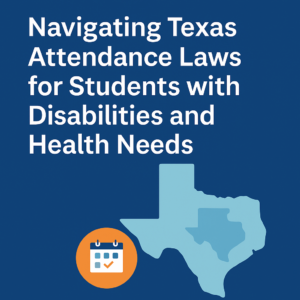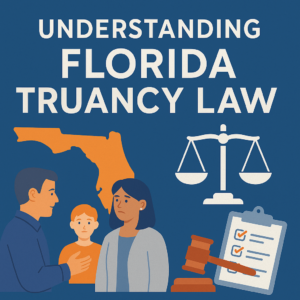Working with your school is key to getting your school-avoidant child back into the building. Whether you have an intervention plan, 504 Plan, or IEP, your school can provide assistance, accommodations, and modifications.
You are the leading voice for your child. When you go to meetings, be prepared with ideas of possible accommodations and modifications to request from the school.
Be kind, courteous, and persistent. Use proof sources to make your case (see listed below).
Schools will often say that they can’t provide a resource or accommodation because they don’t have the staff or funding. Please note that both Section 504 and IDEA state that lack of funding is not an acceptable excuse.
As per Section 504:
“A lack of funding does not excuse a district’s failure to provide FAPE.”
Washington State School for the Deaf, 22 IDELR 987 (OCR 1995)

Accommodations For Kids Who are Presently Out of School:
- Designate a teacher, staff member who has a connection with the student or mental health professional to visit the student’s home on a regular basis to establish trust, rapport, and engagement.
- Have teacher text student regularly sharing anything done in class that may interest the student.
- Formulate a gradual reentry plan utilizing the premise of exposure therapy to allow the student to have small successes along the way. The plan should be flexible, accommodating, and built exclusively to meet the needs of this particular student. It would be helpful to incorporate the advice of a mental health professional working with the student.
- Once the student reenters the building, the first staff or teacher contacts should be strategically chosen based on comfort levels or trust with the student.
- Do not rush the plan. Pushing too fast can cause setbacks.
- Allow the student to start with a reduced school day.
- Ask the school to suspend their truancy letters or robocalls. Explain this is a mental health condition, just like a health condition where a student is physically unable to go to school (they would not be threatening these kids). Also, explain that you are working with the school and the threatening letters are hurtful and counterproductive.
- Make sure the academic load is modified as well, so the student isn’t inundated with school work all at once. Each teacher should be aware of the plan and modifications.
- Work with the school on an academic catch-up plan that does not require making up all missed work. They can modify this to help a student return.
Accommodations and Modifications For Students Doing Online School But Refusing In-person School or A Child Reentering School:

- Ask the teacher to assign partner projects to have school-avoidant kids interact with their peers and possibly meet up.
- Designate a teacher or staff member who has a connection with the student (or a mental health professional) to visit the student’s home on a regular basis to establish trust, rapport, and engagement. This is a form of exposure therapy.
- Have teacher text student regularly sharing anything done in class that may interest the student.
Transitions and Timing:
- Allow the student to start school after the usual start time to avoid stress during regular arrival times.
- Begin the day with a counselor, aid, or special education teacher in a safe place.
- Modify their course schedule to allow for a favorite class or elective to start the day.
- Allow the student to leave class a few minutes early to avoid crowded hallways during passing periods.
- Provide the student with a safe pass to leave the room at any time to regroup or destress.
Assignments:
- Teachers provide Scaffolding of assignments which breaks down larger projects into smaller discrete pieces.
- Establish limits for how much time should be spent on any piece of homework and communicate those times with parents.
- Modified coursework or homework assignments
- Allow extra time to complete assignments when anxiety or mental health challenges affect their ability to finish their work.

- Allow class presentations to be done one on one with the teacher.
- Do not penalize the student for missed work if their mental health symptoms are interfering.
Testing:
- Provide extra time to complete a test.
- Allow the student to take a test over periods of time.
- Provide breaks during a test.
- Permit the student to take a test in a different part of the room or in a location other than the classroom.
- Have school prepare documentation to ensure extended test times for all state and national assessments.
You will see various lists online about possible modifications and accommodations. None of these lists all combined are exhaustive. You can always create your own. Just because you have never seen it written before, does not mean it can’t be done.
Remember that you are the CEO of any intervention team working to help your child. The help they provide is not a favor; it is your child’s right.
Please share if you have any helpful accommodations, modifications, or strategies that helped your child with school avoidance.
Our community thrives on sharing information as we work to support each other.
Proof Sources and Resources
Center for Parent Information and Resources
Anxiety in the Classroom-Although OCD specific many of these options are applicable for school avoidance and anxiety.
How to Respond When Your School Denies Services
Section 504 Does Matter to Special Education Directors– Courtesy of Peggy Duran-Klenclo and Andrea Slater Gulley, J.D., Underwood Law Firm






